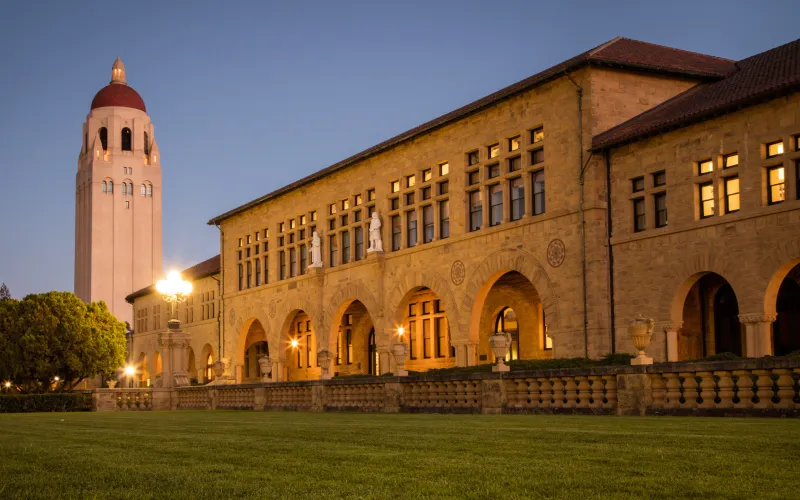Director of the Program of Science, Technology & Society Paul Edwards claims to have detected 1650 parts per million (ppm) of carbon dioxide in Braun Geology Corner classroom 320-109, well above the generally accepted safe limit of 1000 ppm. The University has since identified a broken supply fan as the potential source of the issue and is working to remedy the problem.
Using a Chtoocy Portable CO2 Monitor provided by Edwards, The Daily examined other buildings on campus, including the Lane History Corner, the Math Basement, and Arillaga Dining Hall. The Daily did not find levels in these rooms that exceeded 800 ppm. This was not an exhaustive survey.
Carbon dioxide (CO2), which humans exhale, is used to measure indoor ventilation quality. The gas presents few inherent dangers, although it is associated with loss of mental acuity at high concentrations. Generally, it serves as a proxy measurement for other components of human breath, such as aerosol viruses like COVID-19, in a room.
“A room can be filled with aerosols, and they can stay there for hours. So the next people who come in can catch [COVID-19],” Edwards told The Daily. “So what can we do about this? One thing is ventilation. And that’s where this CO2 meter comes in.”
Edwards, who is immunocompromised, purchased a Chtoocy Portable CO2 Monitor in January to gauge ventilation in his classroom and ensure that he was not at an increased risk of contracting COVID-19 while teaching students. Proper ventilation is a component of compliance with Stanford’s Healthy Buildings Program.
Within days of initially finding surprisingly high concentrations, Edwards tweeted that levels of CO2 in his classroom were “in a range that causes cognitive impairment” and emailed Associate Vice Provost for Environmental Health and Safety Russel Furr the following week.
Open air contains approximately 420 ppm of carbon dioxide, and the safe limit for indoor concentration recognized by the American Society of Heating, Refrigeration, and Air Conditioning Engineers is 1000 ppm.
Edwards’s findings suggest poor ventilation in the classroom, but many students did not notice issues in the ventilation. “I haven’t noticed anything in particular,” said Casey Christmas ’25, who attends BIO 71 section in 320-109. When The Daily used Edward’s Chtoocy Portable CO2 Monitor to check the CO2 levels in room 320-109, they detected levels of 1440 ppm.
Edwards now takes measures to reduce the concentration to safe levels and advises others who are concerned about ventilation to do the same. He leaves windows and doors to his classroom open and brings a Corsi-Rosenthal box, a homemade device composed of filters and computer fans, to ventilate the room. He has found that carbon dioxide concentration generally declines to levels similar to the outdoors through the duration of his class.
After Edwards contacted the University with concerns about high concentrations of carbon dioxide, Stanford Land, Buildings, and Real Estate identified a broken supply fan, a likely cause of the poor ventilation, and is working to repair it.
However, Edwards suggests that the University go further to ensure proper building ventilation and is advocating for ventilation monitoring and signage to be used in every classroom.
“If we have this combination of CO2 monitoring to learn about this, air changes per hour posted so people know, an indication of the filter quality, and when the filter was last changed, then at least people can judge for themselves, going in, whether this is going to be a safe place or not,” Edwards said.
The Daily reached out to the University to ask if the University is considering such measures. “A number of technologies are being considered, including the addition of CO2 monitors in more indoor spaces, as part of the EH&S Healthy Buildings Program,” wrote Stanford’s director of Emergency Communications and Media Relations, Luisa Rapport.
“Since the beginning of the pandemic, Stanford has adopted additional best practice recommendations including maximizing outdoor air exchange and increasing filtered air efficiency,” Rapport wrote. “Preventative maintenance for campus mechanical ventilation systems is conducted on a regular basis, in alignment with industry best practices. The campus community can report issues to our Buildings & Grounds Maintenance team by visiting BGM.stanford.edu or by calling x3-2281 (650-723-2281).”
